Self-Immolations
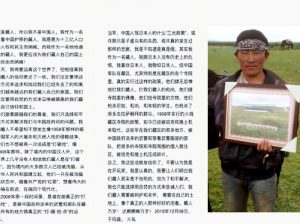
Dec 8: 2016 / Tashi Rabten, 33, self-immolated in Machu in the Gansu province. Onlookers reported that during his protest he called out for "freedom for Tibet and for the return of the Dalai Lama” and that he also called out for the release of the Panchen Lama, Gendun Choekyi Nyima who is detained in China. Police took him away immediately and later questioned his family, taking his wife and 15-year-old daughter into custody. Radio Free Asia reports that the police demanded that his family "say that the self-immolation had no connection with Chinese government policies, and had been carried out instead because of problems at home". There is no news about his current condition or whereabouts. Tashi Rabten was a father of three. The Tibet Post International has received a letter written in Chinese by Tashi Rabten before his protest. The full text, as published by TPI, is reproduced below: The letter, dated December 08, 2016, was received by the Tibet Post International on the next day of his self-immolation protest, and translated by Phurbu Dolma, staff writer of TPI from Chinese into English. The full letter is below: I am a Tibetan, so I am not a Chinese. As a Tibetan with the Chinese passport, I am willing to cry for the human rights and democracy for 1.3 billion of people. However, as an authentic Tibetan, I should cry for our territory and freedom even more! Today, I will leave this world. But I believe that I am moving closer to our Tibetan belief. We are destined to use this approach to pursue and obtain our already-lost and fading-away homeland. We are destined to use self-immolation to call back our Tibetan belief and territory that has been isolated. We are willing to follow our His Holiness [the Dalai Lama]. We only choose peaceful ways to solve our problem with the Chinese government. We Tibetans do not want the Massacre and inhuman invasion war by China's People's Liberation Army back in 1958 to happen again. We don't want to be called as "riot" (beating, smashing, and robbery) as in 2008. Other than Chinese within China, almost nobody in the world believes that our Tibetans are having a "riot". Because most Chinese within China are brainwashed. Since the establishment of the People's Republic of China, they are always in the status of being brainwashed, singing the Chinese Communist Party's "red songs", envisioning the great leader is progressing, constructing the "Four Modernity". In that period of 2008, who were really rioting? It was the Armed Police and the Chinese Army dispatched by the Chinese government that were really launching a 'beating, smashing, robbery, killing' campaign. In the past, Chinese swore the Japanese "Three Alls" policy (a colonial control measure). It might be purely conjecture, or it might have actually taken place. I don't know if it was real or not. In fact, as a Tibetan, I don't have hatred towards the Japanese. I like Japanese and respect Japanese. However, the Chinese army really executed a policy as such in the Tibetan region, especially in Tibetan monasteries. They were recklessly beating us Tibetans, beating our renowned monks, smashing our Buddhist statues in the monasteries, and robbing the artifacts in the monasteries. They murdered nuns, monks, and young students with guns. They also murdered many pilgrims to Lhasa with guns. The 1958 policy of burning down the monastery, has been replaced by tanks and bulldozers. Nowadays, in many places in our Tibetan region, many monasteries and monk's residences have been crushed into ruins by tanks and bulldozers from the Chinese Armed Police and the Chinese Army. In all, my words are hereby sent to you. Don't think I am joking. I am ernest. I want people understand that we Tibetans actually are not afraid of death. Yet, for the peaceful resolution, I can only use self-immolation to warn people. We Tibetans need to be protected and taken care of. We need to be on our own land, living like real people. Long live the Tibetans. Long live His Holiness the Dalai Lama! 08/12/2016, at Machu, by the Firing Bird
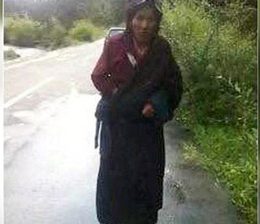
May 7: 2016 / Sonam Tso, a mother of five has self-immolated near a monastery in Dzoege county in Ngaba Tibetan Autonomous Prefecture. Sonam, who was in her 50s, self-immolated on March 23 calling out for the return of His Holiness the Dalai Lama and for freedom for Tibet. Reports of the incident are only now emerging from Tibet, via Radio Free Asia, because of the communication clampdown imposed by Chinese authorities in the area. She died at the monastery before her husband and uncle, who is a monk, could take her to hospital. Sonam’s uncle Tsultrim was detained by police for eight days because he discussed the incident with other people, and he was forced to delete the pictures he had taken of Sonam’s protest. Sonam Tso’s husband Kalsang Gyaltsen was also called in for questioning three times. She has left behind two sons and three daughters. Her self-immolation is the second inside Tibet this year, the first was Kalsang Wangdue, a monk from Kardze, in February.
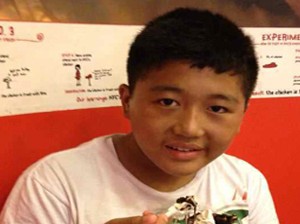
Feb 29: 2016 / Dorjee Tsering, a 15-year-old Tibetan boy living in Herbertpur town near Dehradun has self-immolated and is in hospital in Delhi suffering from 95% burns. Dorjee said, “The reason I resort to burning myself like a choemey (Butter lamp) is because Tibet was occupied by China since 1959 and I have always felt like I needed to do something for the Tibetan cause. Yesterday, I felt as if burning myself up was the only resort left for me.” The Tibet Times has reported that Dorjee’s mother put out the flames and that she said he had talked to her and to his father recently about self-immolating. Dorjee staged his protest outside an old people's home where he had been visiting his grandfather with his family. He died on March 3.
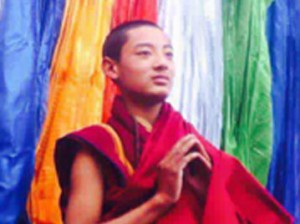
Feb 29: 2016 / Kalsang Wangdu, a Tibetan monk from the Retsokha Aryaling monastery in Kardze, set himself on fire and died in southwestern China’s Sichuan province. Radio Free Asia reports their source in the region as saying “[While he burned], he called out for Tibet’s complete independence”. There are also media reports that “He raised slogans calling for Tibet’s complete independence...Passersby tried to douse the fire and rushed him to a hospital. However, he died on the way”. RFA reports that this self-immolation has not yet been confirmed. Wangdu’s parents are Sotra, and Urgyen Dolma. A candle-lit vigil was held in McLeod Ganj, attended by hundreds of Tibetans and supporters. Radio Free Asia has reported that Wangdu's family are being pressured by local authorities to say he died in a house fire.
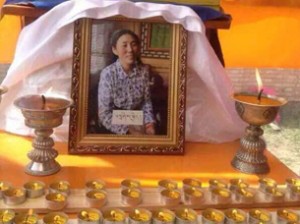
Aug 27: Tashi Kyi, a woman in her mid 50s, has died after setting herself on fire in northwest China’s Gansu province, apparently protesting against the demolition of her home and her village by the Chinese authorities. Nearby people tried to save her but she died and her body was taken away by the authorities, despite appeals to let the family perform the last rites. Police and government officials had raided a house, apparently hers, and then started demolishing it and other houses with bulldozers, they also arrested and beat the owner. People were unable to stop them despite physically hanging onto the demolition equipment. Officials said the houses were being demolished because they did not have valid permits. Kyi was a resident of Ngulra village, Sangkok town in Sangchu county in the Kanlho prefecture.
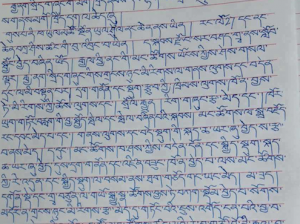
Jul 9: Sonam Topgyal, 26, a monk, became the 142nd person to self-immolate in protest against Chinese rule in Tibet. He self-immolated on July 9 at around 4pm in Gesar Square in the Tibetan town of Kyegudo in Qinghai. Photographs showing him on the ground engulfed in flames immediately circulated on social media. The photos also show security personnel forming a cordon around the area and there are anecdotal reports of armed police. He was a monk from Nangchen County who studied at Dzongsar Monastery in Derge County. Further information about Sonam, his condition and whereabouts, has been difficult to obtain due to the shutdown of telephone and internet services in the region, although it is understood that he was taken to hospital. Sonam’s family home was surrounded by police and local people described “intense fear” in the area. A week after his protest it was confirmed that Sonam died a as result of his injuries. He left a statement in his will, dated July 1, addressed to the political heads of minority nationalities, in which he spoke about the Chinese government’s repressive policies and the plight of Tibetans in Tibet under Chinese rule. He vehemently urged his fellow Tibetans to be united to resolve the issue of Tibet, saying “The Chinese government…tries to demolish the very existence of minority communities. Political repression, cultural assimilation, economically marginalisation, social discrimination and environmental destruction in Tibet are the key issues in Tibet…we do not have freedom of speech and there is no one to express our problems”.
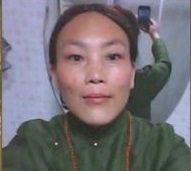
May 27: Sangye Tso, a 36-year old Tibetan woman from Amdo Choney county, Kanlho prefecture in Tibet has died after a self-immolation protest. According to initial reports, Sangye Tso set herself on fire at around 4am local time at the entrance of a Chinese government office where authorities of the Public Security Bureau and People’s Armed Police are stationed. After the protest, local authorities took the body away and interrogated Sangye Tso’s family members while restricting their movements. Sangye Tso is survived by her husband Tamdin Wangyal and their two children; Tsering Dhondup and Khatso.
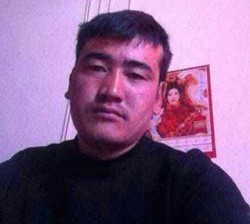
May 20: Tenzin Gyatso, 35, from Khangsar township in Tawu County, eastern Tibet, has set himself ablaze, becoming the 140th Tibetan to self-immolate in protest against Chinese rule in Tibet. Gyatso self-immolated outside the venue of a government officials' meeting; he was protesting against weeks of harrassment and police intimidation in Tawu County where Tibetans have been planning to celebrate the Dalai Lama's 80th birthday. Gyatso is married to Sonam Dolma, they have four children. The authorities informed his relatives that he had died and told them to come for his remains.
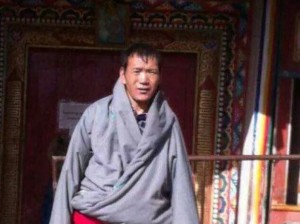
Apr 16: Ney Kyab, a 45-year old Tibetan man, burned himself to death in the courtyard of his home in Soruma village in Choejema town in Ngaba in protest against Beijing’s rule in Tibetan areas. Kyab had set out offerings on an altar nearby with photos of the Dalai Lama and the 10th Panchen Lama, and he had also sent a photo of himself holding a flower to a friend a few days before his protest. His body was taken away by police. Kyab, whose wife died last year, is survived by seven children. One of his brothers-in-law, Dargye, was one of two men who self-immolated in Lhasa in May 2012. Ngaba county was once part of the Tibetan province of Amdo, but is located today in the Chinese province of Sichuan. It is the epicenter of the Tibetan self-immolation protests which started there in 2009.
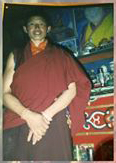
Apr 8: Yeshi Khando, aka Yeyang, 47, a Tibetan nun in her mid forties from the Kardze Ngangang Jhomo Nunnery in Tibet, has died after setting herself on fire in protest against the Chinese government. Yeshi Khando staged the protest in the Kardze County market, near to the County police station, at around nine in the morning. She called for the return of His Holiness the Dalai Lama to Tibet, long life for His Holiness and freedom for Tibet. Police arrived immediately and took her away. Although, she was said to be burned severely, it was not known whether she succumbed to her injuries. The next day, Yeshi's family was summoned by police to inform them that she had died but police refused to hand over the body to the family. Yeshi Khando was from the Tehor Draksur household in Drango County.
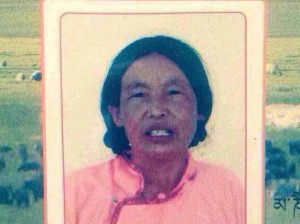
Mar 6: Norchuk, 47, a mother of three from Trotusk village in Ngaba burned herself to death in a protest against Chinese policies in her homeland. She was a constituent of Dephu monastery and had recently taken a vow to become a lifelong vegetarian at a mass gathering of nomads from different villages who committed themselves to virtuous behavior. Norchuk's body was cremated immediately by local government officials. She is the 137th known case of self-immolation by Tibetans since 2008 and the fifth Tibetan woman to self-immolate in Ngaba County. Her death came amid heightened security in the area around the Lunar New Year and Tibetan Uprising day on March 10.
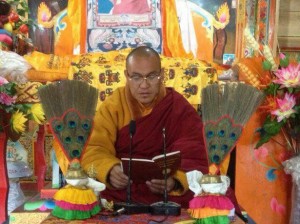
Dec 23: Kalsang Yeshe, 38, a well respected Tibetan monk, set himself on fire at 11.20 am local time outside the Tawu Nyitso monastery in Kardze in the Tibetan Autonomous Prefecture’s Tawu county. Tibetans nearby rushed to prevent him being taken away but police dispersed the crowd by firing warning shots and took Yeshe for medical treatment at Dartsedo hospital, but he died on the way. Later, Yeshe’s family tried to retrieve his body from authorities to bury him according to traditional Tibetan rites, but they were told that the monk had been cremated and his ashes discarded in a river in Dartsedo, although it has been since reported that the ashes have been returned the family. A source, speaking on condition of anonymity, said “He self-immolated in protest against Chinese policies in Tibet and called for the return of the Dalai Lama to Tibet.” Yeshe, a resident of Thewa village in Tawu county's Kunor township, had studied at the Ganden Jangtse monastery in South India before returning to Tibet where he began a campaign against illiteracy among the elderly and taught Buddhism and the Tibetan language. At the time of his self-immolation, Yeshe was holding a Tibetan flag, and it was later discovered that he had placed a ceremonial scarf underneath the image of the Dalai Lama in his room with a caption reading “The six million Tibetans are waiting for you.”
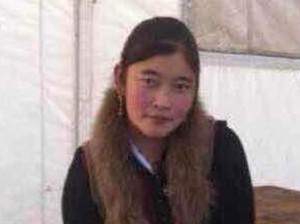
Dec 22: Tsepay, 20, has died after setting herself on fire in Meruma, Ngaba region. According to Tibet Times, police reached at the site within minutes and took the body to an undisclosed location. A local source has said that a duty officer at a local police station denied knowledge of the incident before hanging up the phone. Tsepay lived with her parents, Chudo Rinchen and Chenpa in village number four in Meruma. Her family are nomads and she had six siblings. Her parents and one brother, Yime, were taken away for questioning shortly after her protest, but it is not known if they will be detained. A Tibetan monk living in India said Tsepay was known for her “good character and personal integrity”.

Dec 16: Sangyal Khar, 34, has died after carrying out a self-immolation protest in front of a police station in Amchok Town in the Gansu Province in the Tibetan Autonomous Prefecture. Chinese police arrived at the scene and forcibly removed him. Sangyal Khar was from Khyungri Thang Village and is survived by his two daughters, his parents are Ranglo, and Yudron. RFA has reported being told by a source speaking on condition of anonymity that Khar died “in protest against Chinese policies in Tibetan areas" and added, “We could not confirm that he died at the scene, but I heard that the Chinese took his body to Labrang [monastery], where it was cremated” . The situation remains tense with restrictions on local people's movement and communication lines.
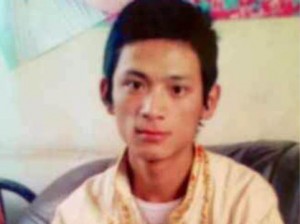
Sep 17: Lhamo Tashi, 22, set fire to himself outside a security office in Tsoe city at midnight. Tashi's parents Chopa Tsering and Dhukar Tso, who live in Drukdo village, Amchok township, were informed of their son's self-immolation by the security police who told them that he had died. They travelled to Tsoe to request their son's body but were told that Tashi had been cremated already and were given some ash which they were told were Tashi's. Lhamo Tashi, a student, is the 132nd Tibetan to self-immolate inside Tibet since 2009. It is not yet known whether he left behind a statement, or spoke at the scene of his immolation. Tashi took part in the 2008 protests and was detained at the time, then subsequently released. A relative has described him as "a student dedicated to preserving his Tibetan heritage".



